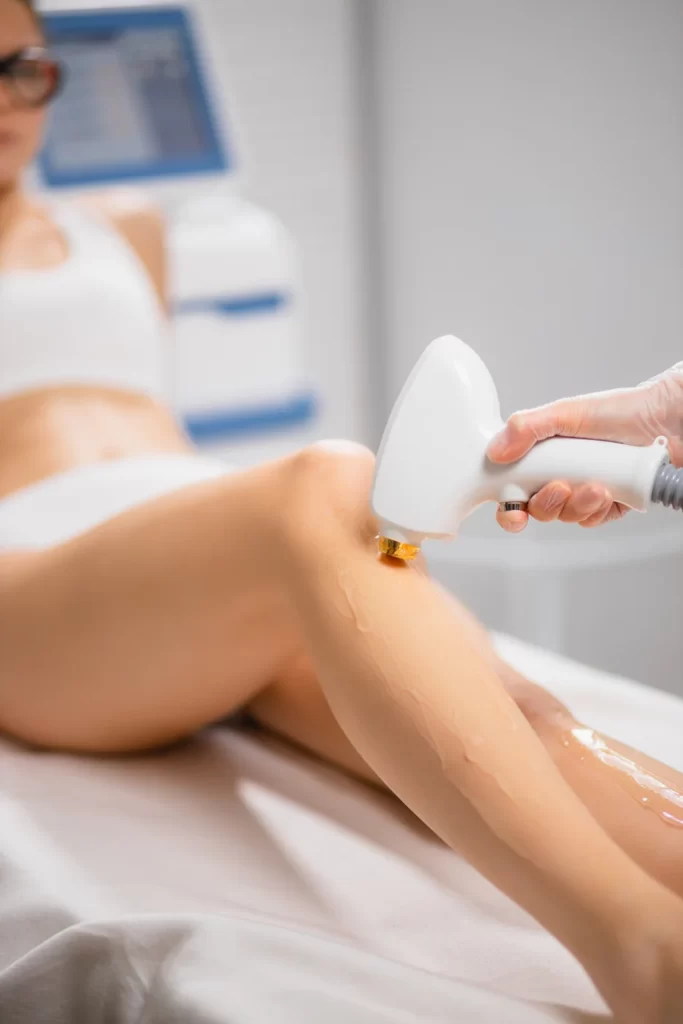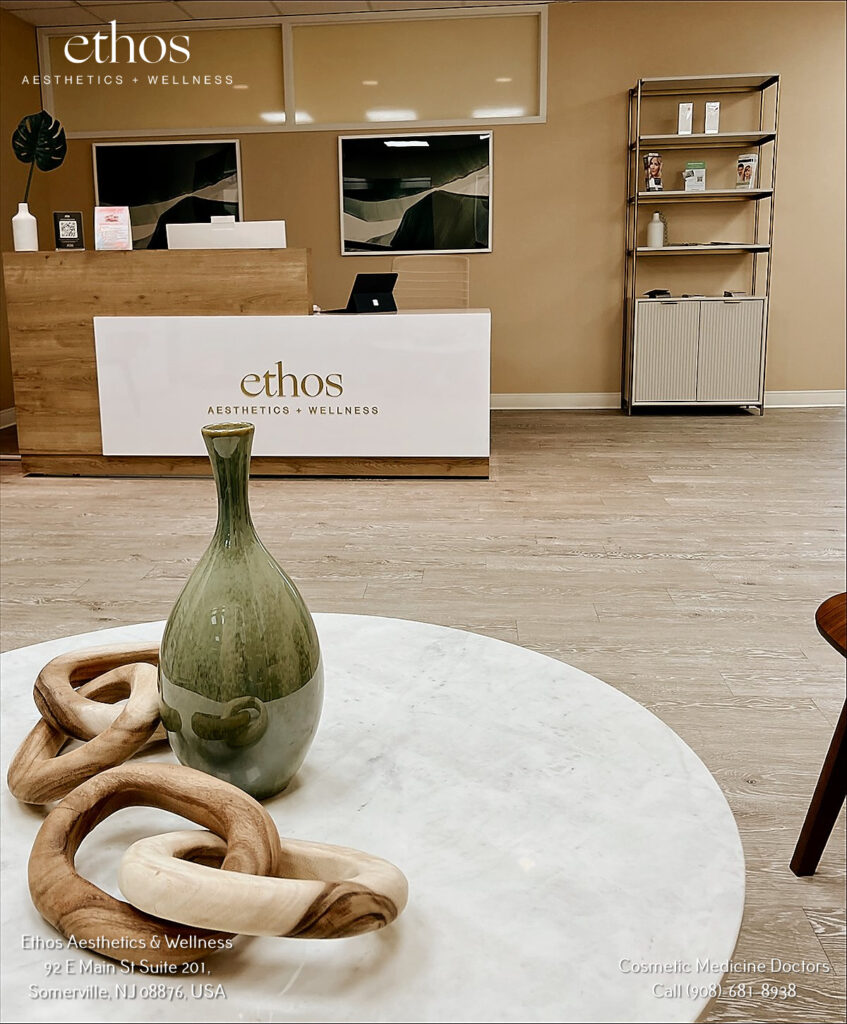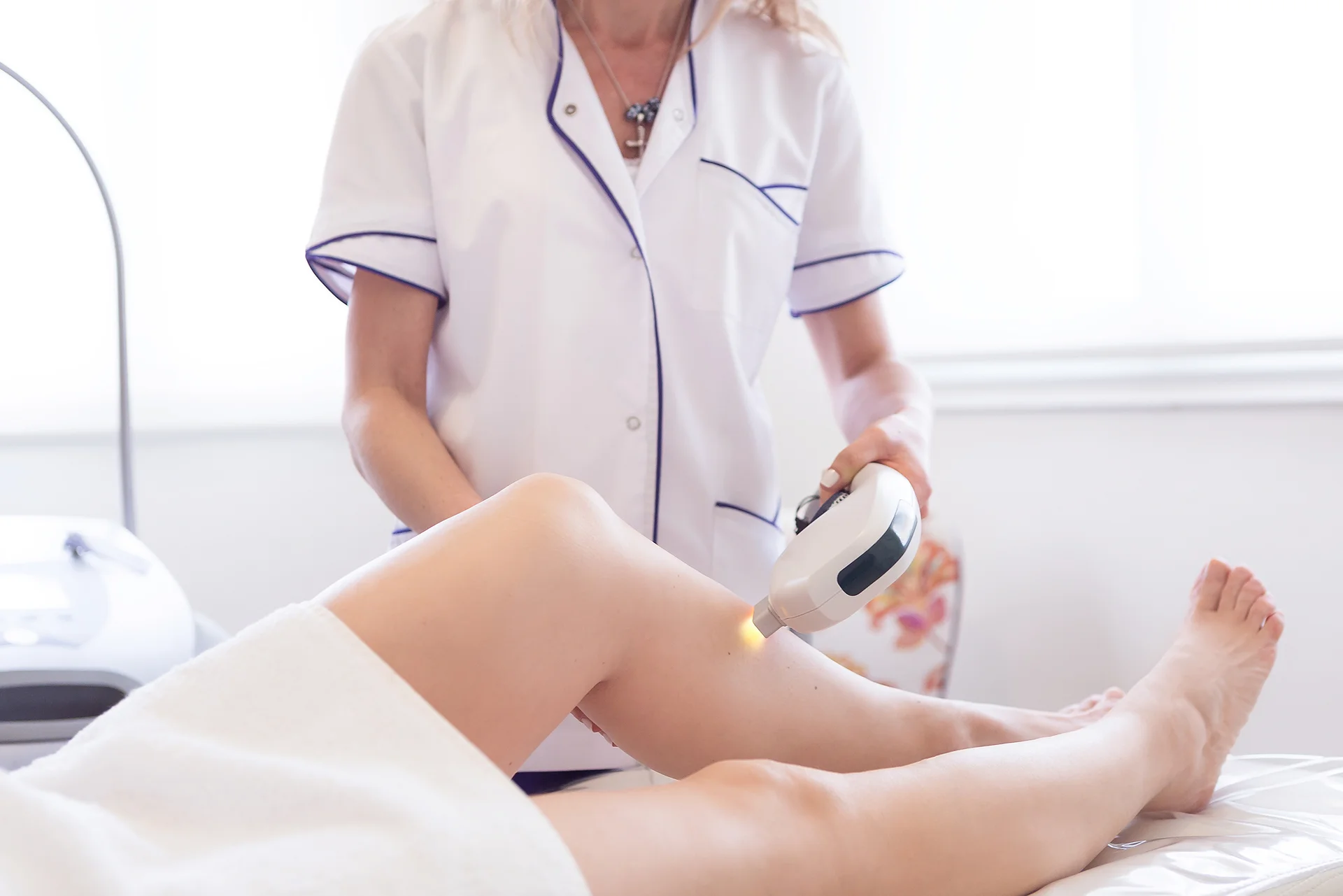All Your Questions Answered
At Ethos Aesthetics + Wellness, laser hair removal is one of our most popular treatments for achieving smooth, hair-free skin.
As an expert in minimally invasive cosmetic procedures, Dr. Soni understands that many clients wonder if they can tan either naturally or artificially after receiving laser hair removal treatments.
At our practice, we recommend avoiding any form of tanning for at least 2 weeks after laser hair removal for optimal results and safety.
How Laser Hair Removal Works

Laser hair removal uses concentrated beams of light to target and damage the hair follicles, preventing future hair growth. The laser emits a wavelength that is attracted to pigment, removing hair follicles without damaging the surrounding skin.
During treatment, the laser’s energy gets absorbed by melanin in the hair follicle and follicle stem cells, effectively damaging the follicle so it cannot regrow.
Melanin provides “color” to both hair and skin, which is why laser hair removal works best on individuals with light skin and dark hair. The color contrast allows the laser to selectively target the darker hair without affecting the lighter skin.
Is it safe to tan after laser hair removal?
No, tanning is not considered safe for at least 2 weeks after laser treatments. Even when healed, tanning can still impact the overall results so photoprotection is highly encouraged. Consult our staff about when tanning can safely resume for your situation.
Why can’t you tan after laser hair removal?
The laser targets melanin in the hair follicles, so an increase in skin melanin from tanning makes it harder for the laser to selectively damage hair without potential risk to the tanned skin.
What happens if you tan after laser hair removal?
Tanning too soon can interfere with the laser hair removal process and cause side effects like hyperpigmentation, burns, and blistering. Avoid tanning for at least 2 weeks after each session.
Can I get a spray tan after laser hair removal?
After the treated area is fully healed, spray tans done by a professional technician are generally safe when applied carefully to avoid any irritation.
However, we recommend waiting at least 2 weeks post-treatment depending on your skin’s recovery. Test a small patch first to watch for reactions before the full spray tan.
The Role of Melanin in Tanning
Tanning occurs when the skin produces more melanin in response to sun exposure. Melanin shields the DNA in skin cells from potentially damaging ultraviolet (UV) radiation from the sun. As melanin production increases, the skin darkens to a tan.
Sunless tanning lotions and spray tans contain an active ingredient called dihydroxyacetone or DHA. This ingredient reacts with amino acids on the skin’s surface to temporarily darken the skin’s appearance, mimicking a natural tan.
Both natural tanning and sunless tanning will increase the amount of melanin in the skin’s epidermal layer. With laser hair removal, the goal is to have low melanin in the skin so the laser only targets the highly pigmented hair follicles. An increase in melanin from tanning can put the skin at risk for unwanted side effects from the laser treatment.
Potential Risks of Tanning After Laser Hair Removal
Tanning too soon after laser hair removal essentially negates the purpose of the treatment. Some of the potential risks include:
- Less effective results: The laser relies on targeting dark hairs against light skin. An increase in skin melanin from tanning makes it more difficult for the laser to selectively damage the hair follicle without potentially affecting the darker tanned skin. This can result in poor hair removal after a series of treatments.
- Hyperpigmentation: An increase in skin melanin from tanning can cause the laser to overly target the darker epidermal skin cells. This laser damage leads to an overproduction of melanin, resulting in hyperpigmentation or darker patches on the skin. This side effect is more common in darker skin tones.
- Blistering/burning: The laser may heat up and cause burns on tanned skin, resulting in redness, blistering, irritation and peeling. This occurs because the melanin-rich skin more readily absorbs the laser’s energy compared to untanned skin.
- Scarring: A burn severe enough can lead to scarring, especially if blisters form. Scarring from a laser mishap can be permanent.
- Increased pain/discomfort: Due to the skin’s heightened sensitivity from sun or UV exposure, patients may experience more pain during the laser session on tanned skin. Discomfort is a normal part of the treatment but tanning beforehand can make it more pronounced.
- Increased recovery time: The potential for hyperpigmentation, blistering and burns means the skin may take longer to heal after laser hair removal done on tanned skin. This prolongs the recovery process.
To avoid these risks and get the best results from the investment into laser hair removal treatments, avoiding tanning before and after is crucial.
When Can I Tan After Laser Hair Removal?
At Ethos Aesthetics + Wellness, we recommend patients wait a minimum of 2 weeks after a laser session before tanning or using sunless tanning products. This gives the skin time to fully heal between treatments. Attempting to tan too soon can interfere with the hair removal process and increase the chances of side effects.
Some tips to avoid complications include:
- Use SPF 30+. Apply a broad spectrum sunscreen daily to prevent incidental tanning when outdoors. Reapply every 2 hours if sweating or swimming.
- Wear protective clothing. Cover up with long sleeves, pants, hats and sunglasses when in strong sunlight.
- Avoid peak sun hours. Plan outdoor activities in the early morning or late afternoon when the sun’s rays are less intense.
- Use self tanners cautiously. Look for “anti-aging” or “photo-aging” formulas that specifically do not interact with laser treatments. Test a small area first. Stop use if any irritation.
- Choose spray tans. These adhere to the skin surface only and are less likely to alter melanin levels in the epidermis when used after full healing.
- Consult your provider. Check in with Dr. Soni and our staff about when tanning can safely resume based on your specific treatment plan and progress.
With diligent photoprotection and avoidance of tanning during the full course of laser hair removal treatments, patients can safely achieve smooth summer-ready skin. However, tanning too soon poses a real risk of decreased efficacy and complications.
We find that following these tanning guidelines optimizes results so our patients get the most out of laser hair removal.
What happens if I tan after laser hair removal?
Tanning after a laser session before the area has fully healed can lead to risks like blistering, burns, hyperpigmentation, scarring and poor hair removal results. Always follow our post-care instructions to avoid complications.
By avoiding all forms of tanning around laser hair removal treatments, our patients achieve the best possible results safely with minimal side effects. Dr. Soni strongly advises against tanning within at least 2 weeks pre- and post-laser sessions. Please consult our knowledgeable staff if you have any other questions about timing with tanning and laser hair removal.
FAQs About Tanning After Laser Hair Removal
Many patients have additional questions about the relationship between laser hair removal treatments and tanning. Here are answers to some of the most frequently asked questions at our practice.
Can I tan between laser hair removal treatments?
No, any tanning should be avoided in between the entire course of laser hair removal treatments, not just single sessions. Continued tanning impairs the effectiveness of each subsequent laser session.
Can you tan when having laser hair removal?
No, purposefully tanning should be avoided starting at least 2 weeks prior to the first laser session until the final session is complete. Routine sunscreen use is a must during the full course of treatments.
Does laser hair removal work on tan skin?
Laser hair removal is most effective on light skin with dark coarse hairs. Skin that is deeply tanned is not an ideal candidate. Some melanin is needed to avoid side effects but heavy tanning can impact laser targeting of the hairs.
Can I use self-tanner after laser hair removal?
Only after treatments are fully complete and the skin has healed, self-tanners may be used cautiously. Test a small area first. Products labeled non-reactive with laser treatments are best. Avoid use between sessions.
How long after laser hair removal can I fake tan?
To be safe, wait at least 2 weeks after each laser session before applying any type of fake tan. Test a small spot first and discontinue use if any skin reaction occurs. Consult our staff to confirm when fake tanning products can resume based on your particular response.
Can I go on a sunbed after laser hair removal?
No, sunbeds should be completely avoided before and after laser hair removal treatments. The concentrated UV rays can severely damage skin and cause poor outcomes when combined with laser sessions.
Can I wear fake tan after laser hair removal?
We do not recommend applying fake tanning products immediately after a laser session. Wait until the treated area fully heals, at least 2 weeks.
Then fake tans may be used with caution in small amounts to avoid skin reactions. However, routine fake tanning is best avoided during the entire course of treatments.
Schedule a Consultation Today

At Ethos Aesthetics + Wellness, your satisfaction and safety are our top priority. We provide unparalleled care and invite you to contact us today to learn more about our laser hair removal options.
Discover why so many patients trust us as the leading provider of minimally invasive cosmetic treatments.







